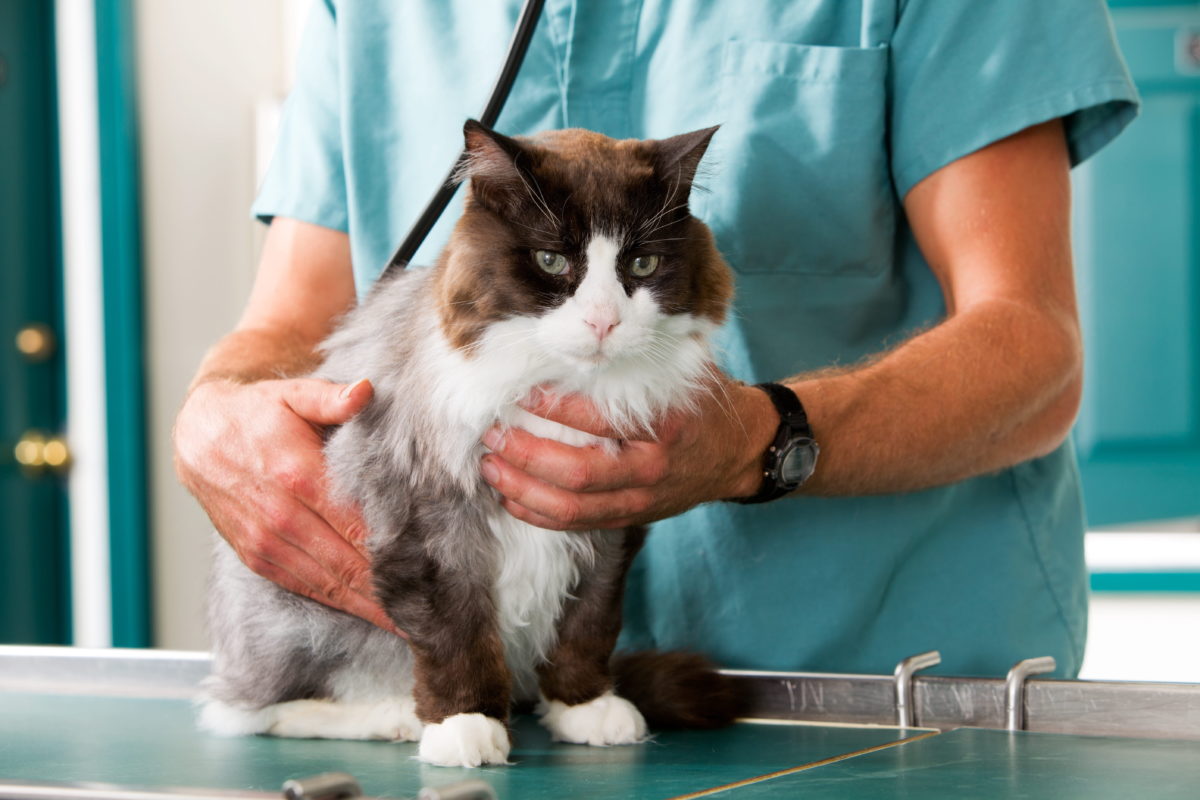Food and Drug Administration officials have received 1,100 adverse event reports of dilated cardiomyopathy in dogs since January 2014.
Dr. Steven M. Solomon, director of the FDA Center for Veterinary Medicine, told attendees of a scientific forum in September 2020 that the disease accounts for more than half of the adverse event reports related to cardiac conditions, according to a written version of his opening remarks. The disease, which has emerged in animals often without known genetic predisposition, has presented a “scientifically complex, multifaceted issue,” but he noted that data from those cases have shown associations between the disease and grain-free foods, particularly those high in peas, lentils, or both.

“A pattern emerged,” he said. “Dogs in cases submitted to FDA were reported to have consumed diets containing high proportions of pulse ingredients, which are dried legume seeds, including peas, chickpeas, and lentils.”
The meeting in September was a forum on DCM, hosted by Kansas State University, and included presentations by pet food company representatives, university-based researchers, and FDA CVM officials who provided an update on data collected by the agency from January 2014 through July 2020. During that time, reports of 1,100 dogs and 20 cats with DCM were shared with the FDA, and the FDA Veterinary Laboratory Investigation and Response Network analyzed records from 161 dogs.
Of 121 dogs with DCM reports sent to the FDA between January 2018 and April 2019, 23 had full recoveries and 84 had partial recoveries.
“All dogs that fully recovered received a diet change,” the presentation states. “Nearly all dogs were also treated with taurine and pimobendan. Over half of the dogs also received an ACE inhibitor, whereas additional treatments and supplements varied.”
Studies follow adverse events
FDA officials issued an alert in July 2018 that they had been receiving reports of DCM in dogs of breeds not typically thought to be prone to the disease, which historically affected mostly large-breed dogs and Cocker Spaniels. In the disease, chambers of the heart dilate, they pump blood less effectively, and dogs develop lethargy, weakness, coughing, rapid breathing, and congestive heart failure.
In at least one presentation in 2019, an FDA representative said 93% of dogs identified in DCM reports had eaten diets high in peas, lentils, or both, and 91% ate grain-free diets.
In the September 2020 meeting, the Vet-LIRN presentation indicated that the network continues to see high proportions of affected dogs eating grain-free diets high in pulses, as well as dogs that recover normal heart size and function after diet changes and treatment.
FDA officials said in a follow-up announcement in November 2020 that the agency continued plans to collaborate with researchers outside the agency on studies of nonhereditary DCM and stated that it was a complex medical condition that may be affected by factors such as genetics, underlying medical conditions, and diet. They also noted that some of September’s presentation materials were available to the public.
In one of those presentations, for example, representatives from Hill’s Pet Nutrition said the company was working with pet genetics testing company Embark Veterinary to study 1,000 dogs in which DCM had been diagnosed and was evaluating potential links between the disease and various genetic markers, foods, medications, and historical factors, including spay or neuter status, according to an abstract.
In other presentations, pet food industry representatives claimed the FDA’s data are insufficient to link DCM with certain types of diets or ingredients.
A representative for Champion Petfoods, for example, said the FDA’s data were insufficient to show certain diets cause DCM, and examinations of those links should consider specific nutrients rather than broader diet characteristics, according to written comments.
Dr. George Collings, president of Missouri-based Nutrition Solutions, said in another presentation legumes and grain-free diets are diverse and subjected to diverse conditions in food production. In his written comments, he suggested increased reports of DCM may be related to other factors, such as overfeeding in dogs or recent genetic mutations that could affect dogs’ ability to metabolize glucose.
Disease afflicts unrelated housemates
Dr. Teresa DeFrancesco, a professor of cardiology and critical care at the North Carolina State University College of Veterinary Medicine, described in September’s meeting a retrospective study that compared disease severity and outcomes for patients with DCM and congestive heart failure at the university hospital, grouped by whether they were on grain-free or conventional diets. In an interview with JAVMA News, she said the group on grain-free diets was younger overall, and it included more dogs from breeds without any known genetic predisposition for DCM.
She said a pair of unrelated Miniature Schnauzers that were on the same lentil-based diet developed DCM within four months of each other in 2017, and they became the hospital’s index cases for potential diet-based DCM. The first died despite intensive treatment, but the second became ill as the veterinary community became aware of the potential for diet-related DCM. It survived with treatment and diet change, Dr. DeFrancesco said.
Because the first Schnauzer died before July 2017, it was excluded from the retrospective study, she said.
The data also indicate dogs tended to have worse clinical signs the longer they were on grain-free diets, she said. And, among the grain-free diet group, younger patients had worse clinical disease.
The NC State study examined medical records for 67 dogs that survived more than one week following the initial diagnosis of congestive heart failure, Dr. DeFrancesco said. Twenty-four had been eating traditional diets, and 43 ate grain-free diets at home but switched diets following the diagnosis.
Dogs in both groups received standard treatments, with dogs that had been on grain-free diets receiving diet changes and supplemental taurine. The groups had similar rates of arrhythmia, she said.
Dr. DeFrancesco noted that the data collected in the study don’t prove any connections between diet and heart failure. It’s difficult to say what would have happened to the dogs if they had stayed on the same diets but otherwise received the same treatments, she said.
“It’s flawed data; it’s retrospective,” she said. “And all it can do is, really, raise an eyebrow. And, fortunately, there are other investigators who are working on this in a prospective manner.”
Dr. DeFrancesco noted that she could provide only limited data at press time, as the study was under peer review pending publication. But, she said, the dogs that had been on grain-free diets then switched to a traditional diet and put on a treatment plan tended to have better recovery and longer survival times—if they survived beyond the one to two weeks after diagnosis.
She also wants to tell other veterinarians that nutrition-related cardiomyopathy can be difficult to detect.
“When you get a 4-year-old pit bull that comes to you for coughing, with no murmur, you may not think of heart disease,” she said.
Dr. DeFrancesco said it’s important for veterinarians to ask about diet when a patient develops clinical signs that might be heart related. She also encourages monitoring the heart function of any animal on a grain-free diet, as identifying disease early could help prevent irreversible damage.
In his written remarks, Dr. Solomon said the Center for Veterinary Medicine sees the rise in DCM cases as a scientific puzzle rather than a regulatory issue. He also said he has no reason to believe pulse ingredients are inherently dangerous, but grain-free foods tend to contain them in higher proportions. CVM officials have asked pet food makers to share information on how they formulate those diets.
He also expressed hope scientific exchanges would expand, collaboration would continue, and any misinformation could be corrected.
“Pet owners and the animals they care deeply about are depending on all of us,” he said.
Read More…
Hypertrophic Cardiomyopathy (HCM)
CAUSE:

Hypertrophic cardiomyopathy (HCM) is the most commonly diagnosed cardiac disease in cats. Characterized by regional or diffuse thickening of the walls of the ventricle (the primary “pump” muscle of the heart), HCM has been diagnosed in cats as young as 4 months old and as old as 16 years old. Although the definitive cause of feline HCM has not been identified, its prevalence within certain breeds (i.e. Maine Coon cats, Ragdolls) has prompted speculation that at least some forms of HCM are genetic in origin. The finding of mutations in an important cardiac protein called myosin binding protein C in affected lines of Maine Coon and Ragdoll cats supports a heritable, genetic component of HCM in these breeds.
Thickening of the walls of the ventricle is associated with a decreased ventricular chamber volume and abnormal ventricular relaxation (diastolic function) in cats with HCM. Since the amount of blood pumped by the heart per minute (cardiac output) is the product of the amount of blood ejected per contraction (stroke volume) and the heart rate in beats per minute, this decreased chamber volume (and subsequent stroke volume) results in an increased heart rate (tachycardia) as a reflex mechanism to maintain cardiac output and blood pressure. Although this reflex increase in heart rate may maintain normal blood pressure in the short term, it is associated with an increased consumption of oxygen by the heart muscle, to the extent that oxygen demand may exceed supply. This scenario may result in an energy starved heart muscle, with subsequent heart cell death and worsening function. Another consequence of an increased heart rate is that the ventricle has less time to fill between contractions, further diminishing stroke volume and promoting a vicious cycle of reflex tachycardia, decreased time for ventricular filling, and so on. This decreased left ventricular filling also promotes stasis of blood in the left atrium (chamber just before the left ventricle), which ultimately contributes to the development of clinical signs (see below).
CLINICAL SIGNS:
Many cats with HCM present without overt signs of illness. In other cases, signs of congestive heart failure including labored or rapid breathing, open-mouth breathing, and lethargy are evident. These signs occur when fluid accumulates in lung tissue (pulmonary edema) or around the lungs (pleural effusion) secondary to elevation of left atrial pressure. A potentially devastating cclud of HCM is thromboembolism. Thromboembolism refers to the development of a clot in the heart (promoted by left atrial enlargement), with ejection of the clot to the systemic circulation. When the clot lodges in the peripheral circulation, it may obstruct blood flow to the region of the heart supplied by the blocked vessel. The site of thromboembolism most commonly observed in cats with HCM is the distal aorta (termed a saddle thrombus), and clinical signs of hind limb paralysis and acute pain in the hind limbs may be observed. Thromboembolism is a poor prognostic indicator in cats with HCM.
DIAGNOSIS:
HCM is diagnosed by echocardiography, which shows the characteristic thickening of the left ventricular walls and decreased chamber volume of the left ventricle. Evaluation of the left atrium for dilation and/or the presence of a thrombus are also achieved using this modality. Since hyperthyroidism and hypertension may also cause left ventricular thickening, these diseases must be ruled out prior to arriving at a diagnosis of HCM. Thoracic radiography may be useful to evaluate pulmonary (lung) status and to rule out pleural effusion. Electrocardiography may be useful to characterize heart rate and to rule out cardiac arrhythmias.
TREATMENT:
Treatment goals for feline HCM include controlling heart rate, alleviating pulmonary congestion, removing pleural fluid (if present), and decreasing the likelihood of thromboembolism. These goals are addressed by the administration of medications that may be delivered by injection in emergent situations or orally in more stable patients. Some drugs (i.e. nitroglycerine) may be applied to the skin for absorption.
PROGNOSIS:
The prognosis for cats with HCM is quite variable. Cats without clinical signs may survive for years, although the disease is most commonly progressive. Poor prognostic indicators include the presence of congestive heart failure, thromboembolism, and hypothermia (low body temperature). In spite of the fact that HCM may decrease the life span of affected cats (sometimes significantly so), medical therapy can improve the quality of life and longevity of cats affected with this common disease.
Read More…



